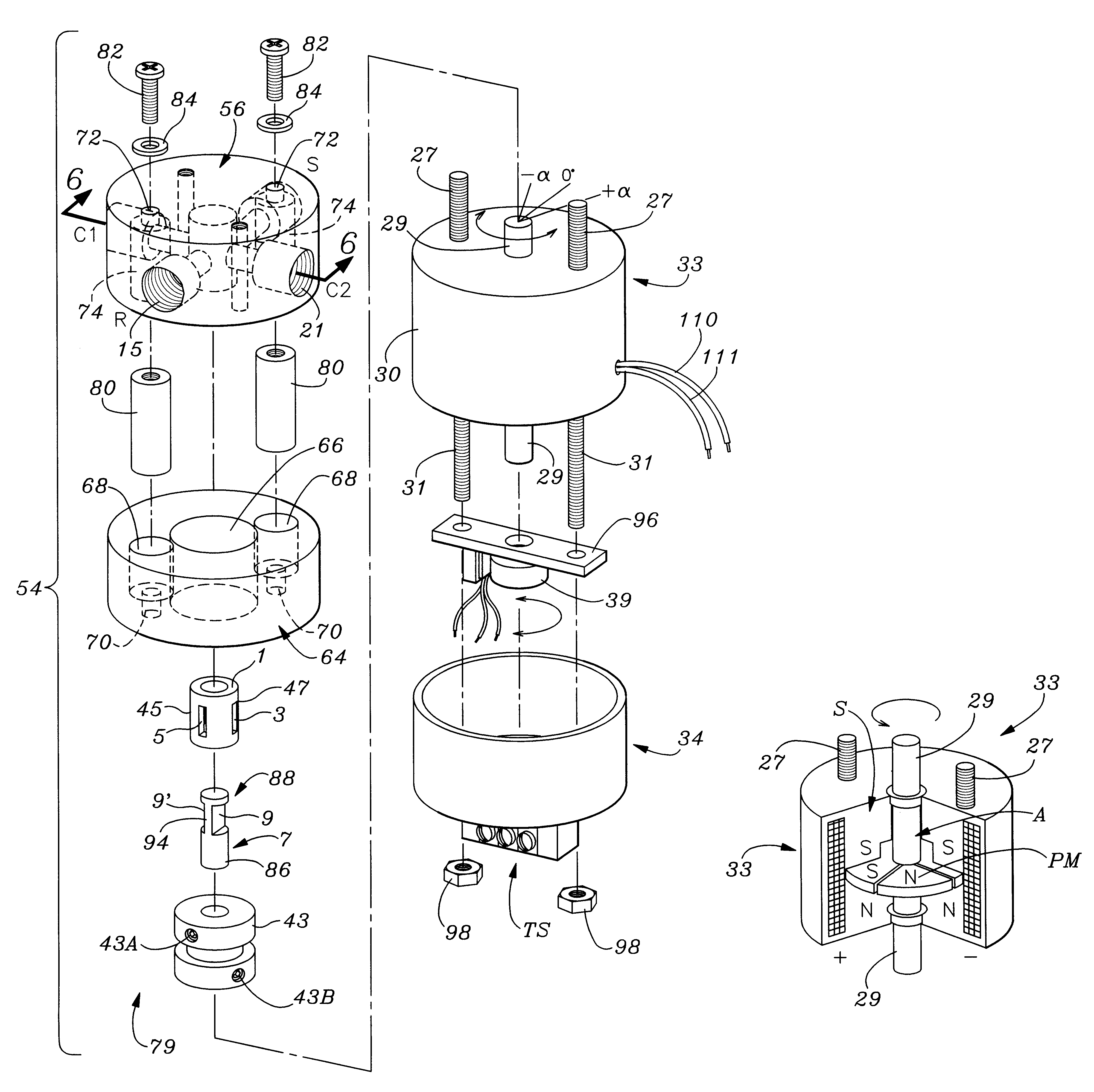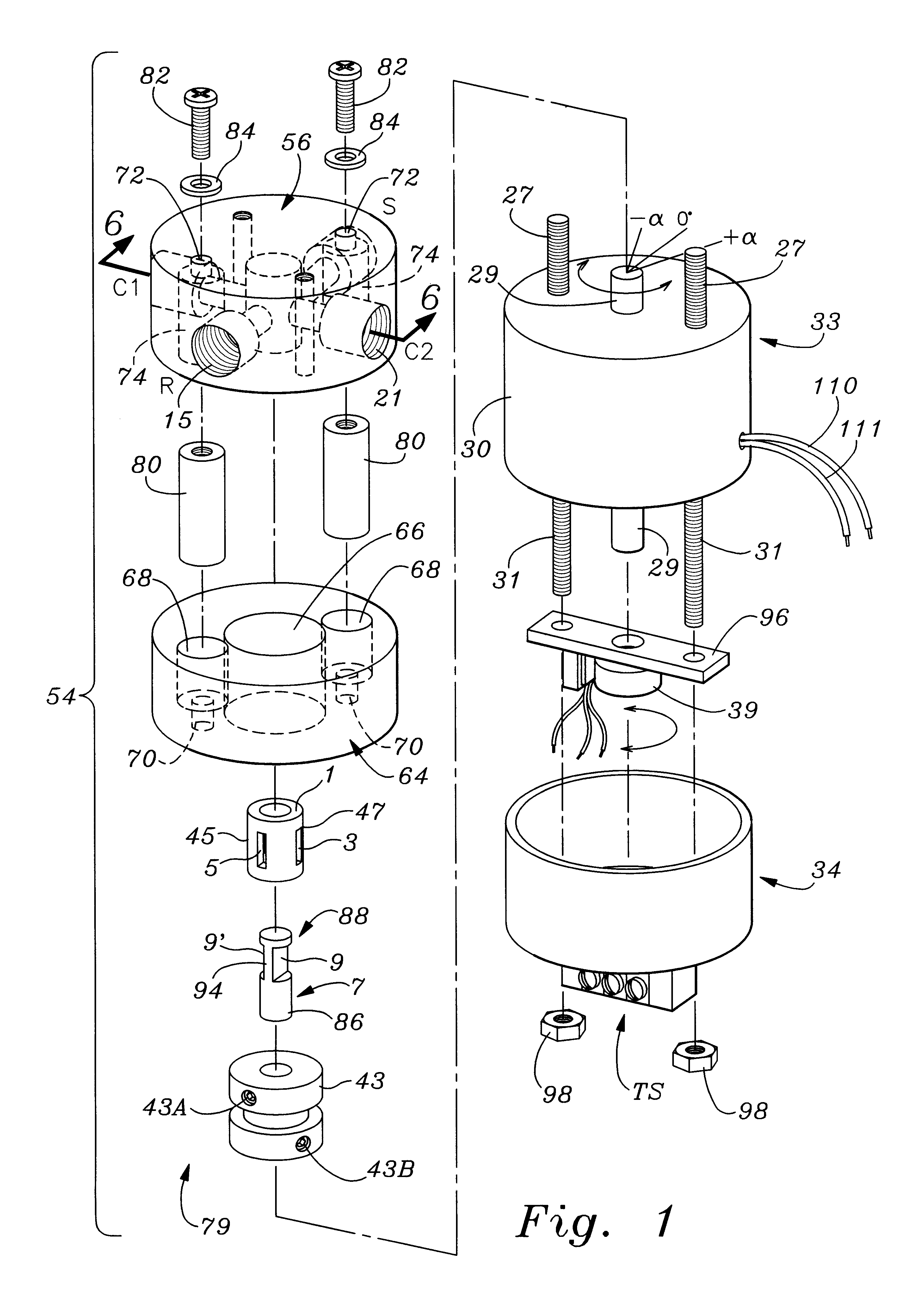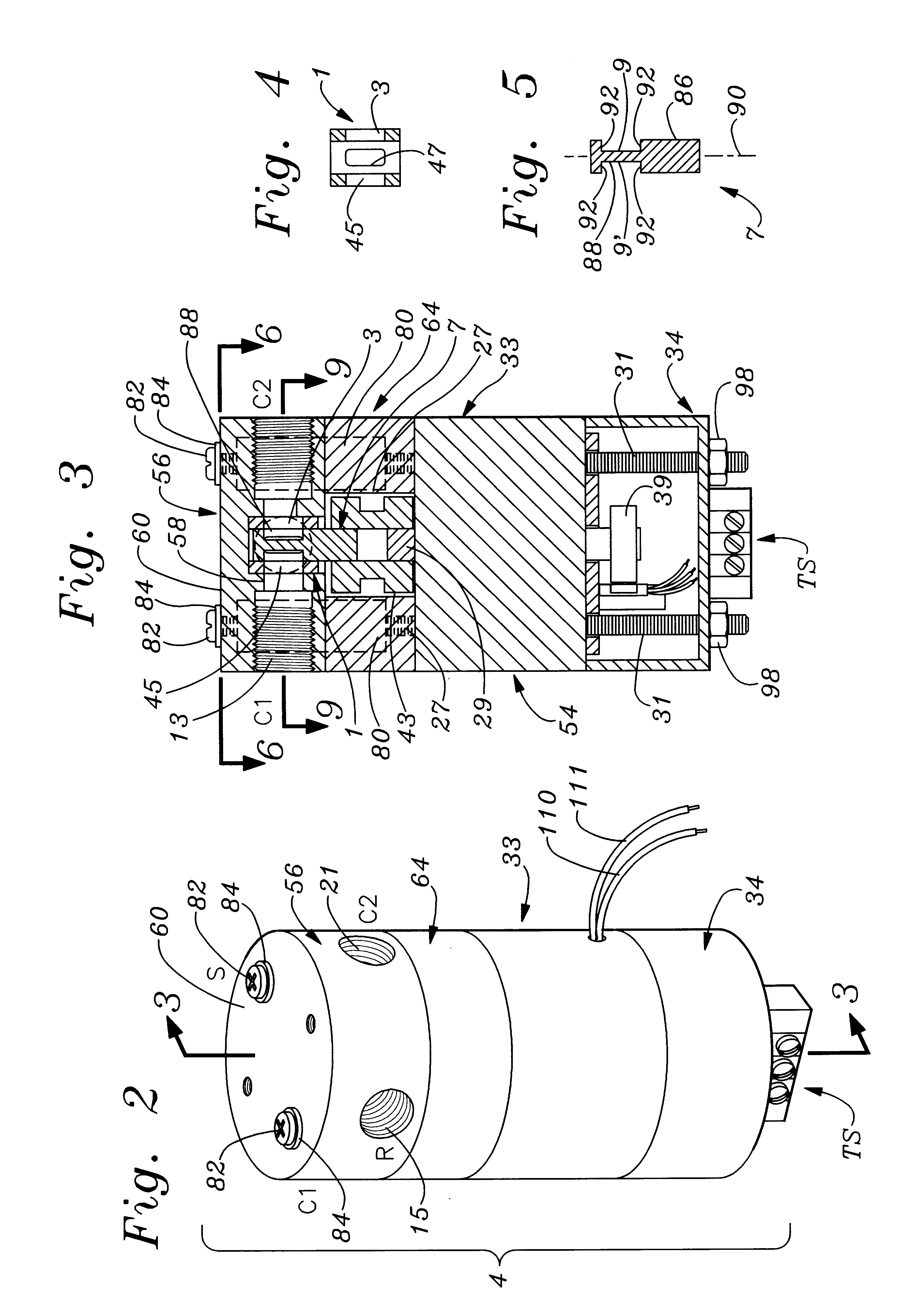Rotary servovalve and control system
a rotary servo valve and control system technology, applied in the direction of valve operating means/release devices, mechanical equipment, transportation and packaging, etc., can solve the problems of high manufacturing tolerance, high cost of the servo valve system, and lack of the requisite torque for commercial use in many applications, and the prior rotary servo valve and control system lacks the torque requisite to achieve the effect of commercial utility in many applications
- Summary
- Abstract
- Description
- Claims
- Application Information
AI Technical Summary
Benefits of technology
Problems solved by technology
Method used
Image
Examples
Embodiment Construction
FIGS. 10 and 11 provide an overview of a rotary servovalve system according to the invention. This system includes a mechanical section 50, illustrated generally in FIG. 10, and an electrical control circuit 52, illustrated in block diagram form in FIG. 11.
The mechanical section 50 of the rotary servovalve system of the invention has a valve and solenoid assembly 54 operated through signals from the control circuit 52 that are connected by appropriate wires to a terminal strip TS, illustrated in FIGS. 1-3. The rotary servovalve and solenoid assembly 54 includes an Ultramag.RTM. rotary actuator 33 that is seated in a hollow, cup-shaped end cap 34. The end cap 34 has a cylindrical, annular wall open at its upper end to receive the rotary magnetic solenoid 33 and is closed at its lower end. The terminal strip TS is located externally on the lower, closed end of the hollow cap 34.
The rotary magnetic solenoid actuator 33 is of the type that includes an armature with at least one permanen...
PUM
 Login to View More
Login to View More Abstract
Description
Claims
Application Information
 Login to View More
Login to View More - R&D
- Intellectual Property
- Life Sciences
- Materials
- Tech Scout
- Unparalleled Data Quality
- Higher Quality Content
- 60% Fewer Hallucinations
Browse by: Latest US Patents, China's latest patents, Technical Efficacy Thesaurus, Application Domain, Technology Topic, Popular Technical Reports.
© 2025 PatSnap. All rights reserved.Legal|Privacy policy|Modern Slavery Act Transparency Statement|Sitemap|About US| Contact US: help@patsnap.com



